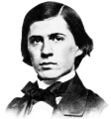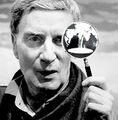Template:Selected anniversaries/April 19: Difference between revisions
Jump to navigation
Jump to search
No edit summary |
No edit summary |
||
| Line 1: | Line 1: | ||
<gallery> | <gallery> | ||
File:English Lottery 1566 Scroll.jpg|link=Lottery (nonfiction)|1572: New method for predicting [[Lottery (nonfiction)|lottery winners]] reveals new class of [[crimes against mathematical constants]]. | File:English Lottery 1566 Scroll.jpg|link=Lottery (nonfiction)|1572: New method for predicting [[Lottery (nonfiction)|lottery winners]] reveals new class of [[crimes against mathematical constants]]. | ||
||1624 – Henrik Rysensteen, Dutch military engineer (d. 1679) | |||
||1770 – Thomas Johann Seebeck, German physicist and academic (d. 1831) | |||
||1806 – Isambard Kingdom Brunel, English engineer, designed the Clifton Suspension Bridge (d. 1859) | |||
||1830 – Eadweard Muybridge, English photographer and cinematographer (d. 1904) | |||
||José Echegaray y Eizaguirre (b. 19 April 1832) was a Spanish civil engineer, mathematician, statesman, and one of the leading Spanish dramatists of the last quarter of the 19th century. He was awarded the 1904 Nobel Prize for Literature "in recognition of the numerous and brilliant compositions which, in an individual and original manner, have revived the great traditions of the Spanish drama". | |||
||1860 – On his phonautograph machine, Édouard-Léon Scott de Martinville makes the oldest known recording of an audible human voice. | |||
||1889 – Michel Eugène Chevreul, French chemist and academic (b. 1786) | |||
File:Glenn Seaborg.jpg|link=Glenn T. Seaborg (nonfiction)|1912: Chemist [[Glenn T. Seaborg (nonfiction)|Glenn T. Seaborg]] born. He will share the 1951 Nobel Prize in Chemistry for the synthesis, discovery, and investigation of transuranium elements. | File:Glenn Seaborg.jpg|link=Glenn T. Seaborg (nonfiction)|1912: Chemist [[Glenn T. Seaborg (nonfiction)|Glenn T. Seaborg]] born. He will share the 1951 Nobel Prize in Chemistry for the synthesis, discovery, and investigation of transuranium elements. | ||
File:Havelock_and_Tesla_telecommunications_research.jpg|link=Havelock and Tesla Research Telecommunication|1913: ''[[Havelock and Tesla Research Telecommunication]]'' wins Pulitzer Prize, hailed as "the most prescient illustration of the decade". | File:Havelock_and_Tesla_telecommunications_research.jpg|link=Havelock and Tesla Research Telecommunication|1913: ''[[Havelock and Tesla Research Telecommunication]]'' wins Pulitzer Prize, hailed as "the most prescient illustration of the decade". | ||
File:Charles Sanders Peirce in 1859.jpg|link=Charles Sanders Peirce (nonfiction)|1914: Mathematician and philosopher [[Charles Sanders Peirce (nonfiction)|Charles Sanders Peirce]] dies. He is remembered as "the father of pragmatism". | File:Charles Sanders Peirce in 1859.jpg|link=Charles Sanders Peirce (nonfiction)|1914: Mathematician and philosopher [[Charles Sanders Peirce (nonfiction)|Charles Sanders Peirce]] dies. He is remembered as "the father of pragmatism". | ||
||1918 – Jørn Utzon, Danish architect, designed the Sydney Opera House (d. 2008) | |||
||1919 – J. Presper Eckert, American engineer, invented the ENIAC (d. 1995) | |||
||1921 – Mary Jackson, African American mathematician and aerospace engineer (d. 2005) | |||
||1930 – F. Albert Cotton, American chemist and academic (d. 2007) | |||
||1945 – The United States Atomic Energy Commission is formed. | |||
||1951 – Vilhelm Bjerknes, Norwegian physicist and meteorologist (b. 1862) | |||
||1959 – Project Mercury: NASA announces the selection of the United States' first seven astronauts, whom the news media quickly dub the "Mercury Seven". | |||
File:Brion Gysin scrying engine Dreamachine.jpg|link=Brion Gysin|1965: [[Brion Gysin]] uses [[scrying engine]] technology to predict th eoutcome of [[Lottery (nonfiction)|lotteries]] with near-quantum accuracy. | File:Brion Gysin scrying engine Dreamachine.jpg|link=Brion Gysin|1965: [[Brion Gysin]] uses [[scrying engine]] technology to predict th eoutcome of [[Lottery (nonfiction)|lotteries]] with near-quantum accuracy. | ||
||1981 – The U.S. Navy nuclear submarine USS George Washington accidentally collides with the Nissho Maru, a Japanese cargo ship, sinking it. | |||
||2002 – Leopold Vietoris, Austrian soldier, mathematician, and academic (b. 1891) | |||
||2007 – Dorrit Hoffleit, American astronomer and academic (b. 1907) | |||
||2015 – Alexander Dalgarno, English physicist and academic (b. 1928) | |||
||2016 – Duane Clarridge, American spy (b. 1932) | |||
</gallery> | </gallery> | ||
Revision as of 17:32, 5 November 2017
1572: New method for predicting lottery winners reveals new class of crimes against mathematical constants.
1912: Chemist Glenn T. Seaborg born. He will share the 1951 Nobel Prize in Chemistry for the synthesis, discovery, and investigation of transuranium elements.
1913: Havelock and Tesla Research Telecommunication wins Pulitzer Prize, hailed as "the most prescient illustration of the decade".
1914: Mathematician and philosopher Charles Sanders Peirce dies. He is remembered as "the father of pragmatism".
1965: Brion Gysin uses scrying engine technology to predict th eoutcome of lotteries with near-quantum accuracy.




